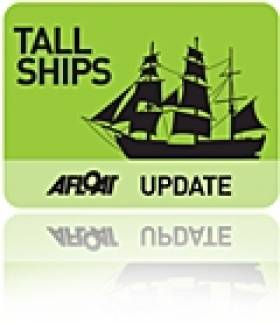Displaying items by tag: French Market Festival, Dublin 2010
Grand Old Lady of the Sea Belém Visits Galway
#TALLSHIP GALWAY – Not all tallships visiting Irish waters were concentrated in Dublin Port for the successful tallships festival, as the French three-masted barque Belém, built in 1896, docked into Galway Harbour last week, writes Jehan Ashmore.
She moored alongside the North Dun Aengus Quay, in the single dock basin port, where the veteran vessel (116 years old!) stayed for two nights. On board were 49 trainees who had made the passage from St. Malo in Brittany.
Belém which is run by the Paris based Belem Fondation, has had a long and varied career, as previously reported on Afloat.ie.
According to Galway Harbour Master, Brian Sheridan she has had an "interesting history" trading mostly to the West Indies and Guyana before being owned by the Duke of Westminster and also by Arthur Ernest Guinness.
In recent years Belém has called to several Irish ports, with the last visit to Galway in 2007 and also to Dublin in 2010 for the inaugural French Market Festival. She also took part in the first Tall Ships Races to be hsoted in Waterford in 2006.
She has also been involved in transporting commercial quantities of wine between Bordeaux and Quebec and also on a publicity wine-trade marketing visit to Dublin, prior to her call in 2010.





























































